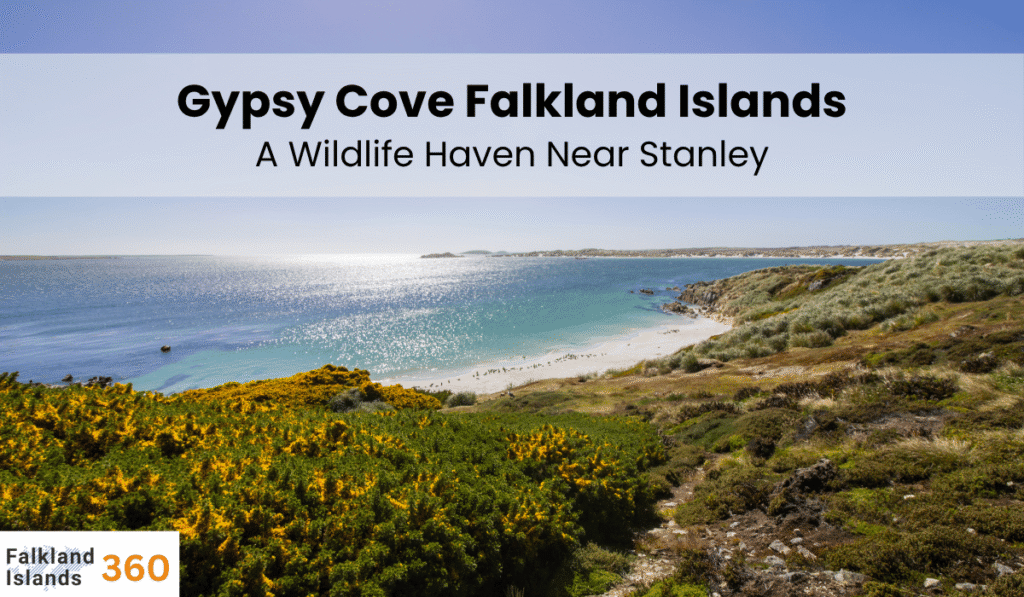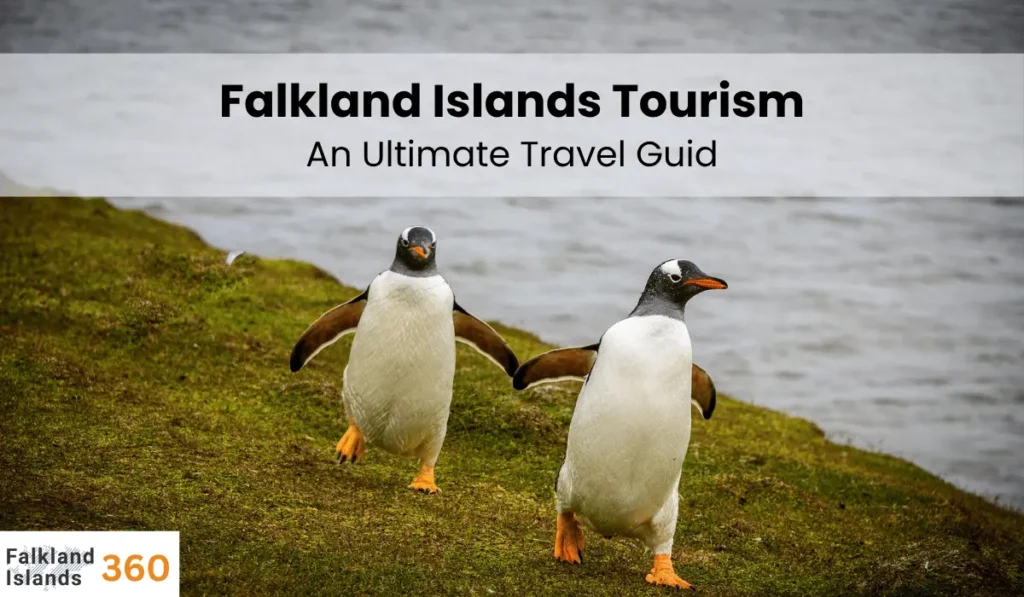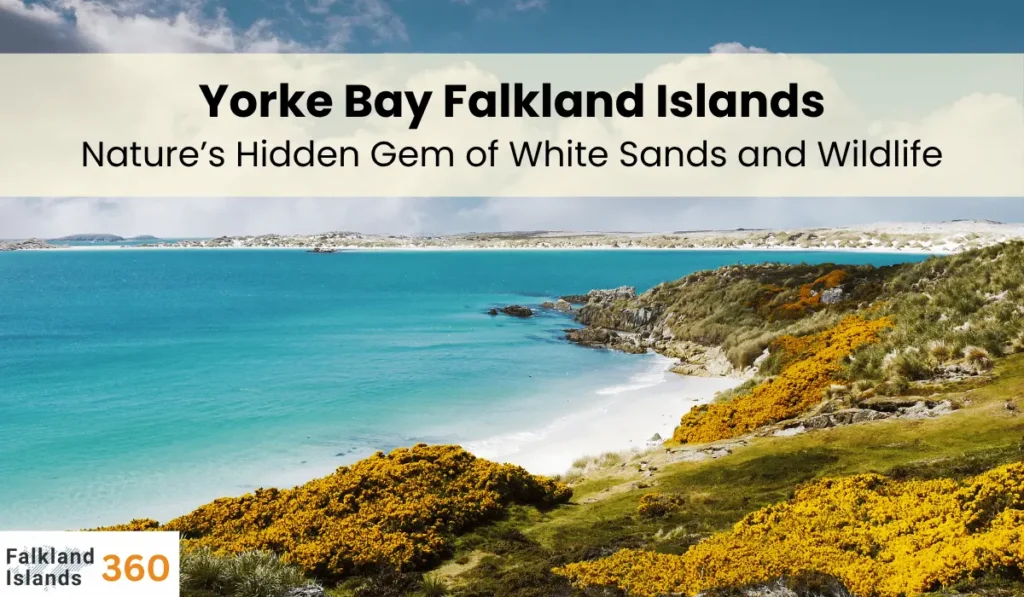Gypsy Cove Falkland Islands is a beautiful coastal spot on East Falkland, just a few miles from the capital, Stanley. It’s known for its sheltered white-sand beach, clear turquoise waters, and abundant wildlife. The scenic bay sits on the Cape Pembroke peninsula (a protected nature reserve), making it a top spot for nature lovers and photographers. Whether you’re spotting curious penguins or photographing the tranquil bay, Gypsy Cove offers an unforgettable Falklands experience.
Getting to Gypsy Cove Falkland Islands: Close to Stanley
Gypsy Cove lies just 6.5 km (about 4 miles) northwest of Stanley. By road, it’s only a 10–15 minute drive or taxi ride from the town centre. There are no public buses, so most visitors use taxis or guided tour buses. (Cruise ship travelers can take shuttle buses that stop here.) If you prefer hiking, a coastal trail links Stanley to Gypsy Cove – a scenic but rugged 1–2 hour walk. The roads are gravel, so drive carefully and watch for sheep along the way.
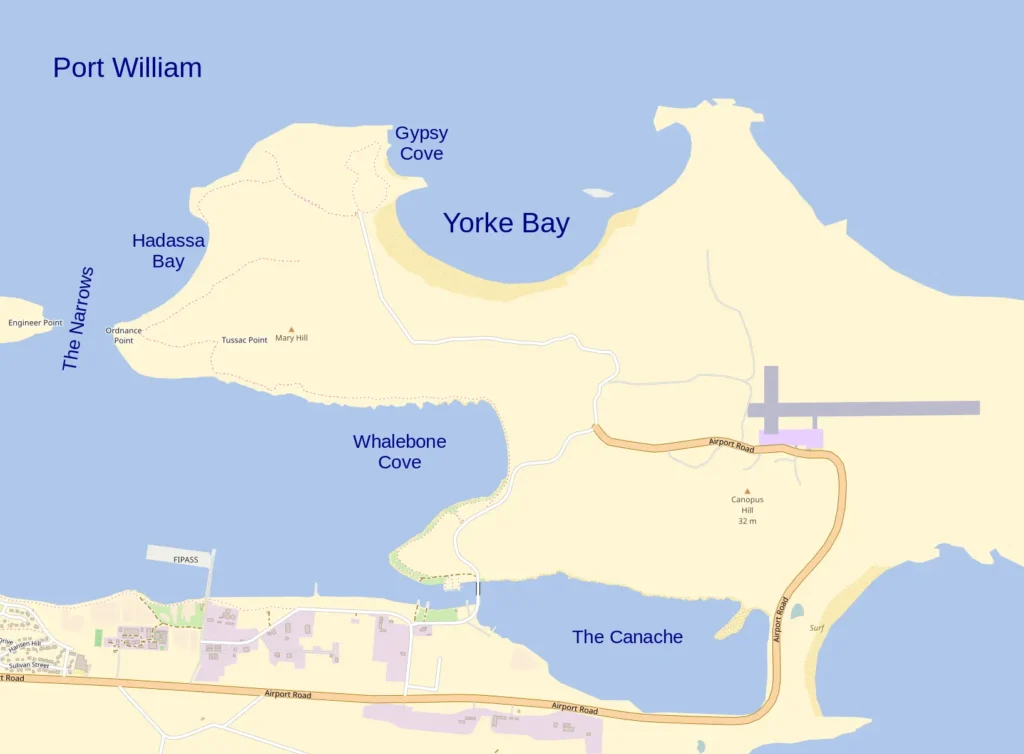
From the small parking area, a short 100-metre gravel path leads down to an elevated viewing platform above the beach. This gentle slope makes the cove easy to reach for most people. Gypsy Cove is open at all times of year (free entry), and public restrooms are available by the car park.
What to See at Gypsy Cove Falkland Islands: Wildlife and Scenery
Gypsy Cove Falkland Islands is famous for its wildlife, especially the Magellanic penguin colony that breeds on the beach. These penguins arrive in spring (around September), nest in burrows, and stay through the summer. You’ll often see them waddling along the sand or popping out of their grassy tussac burrows. (Please watch your step – the burrows can collapse if you stand on them!) The colony at Gypsy Cove has a few hundred breeding pairs.
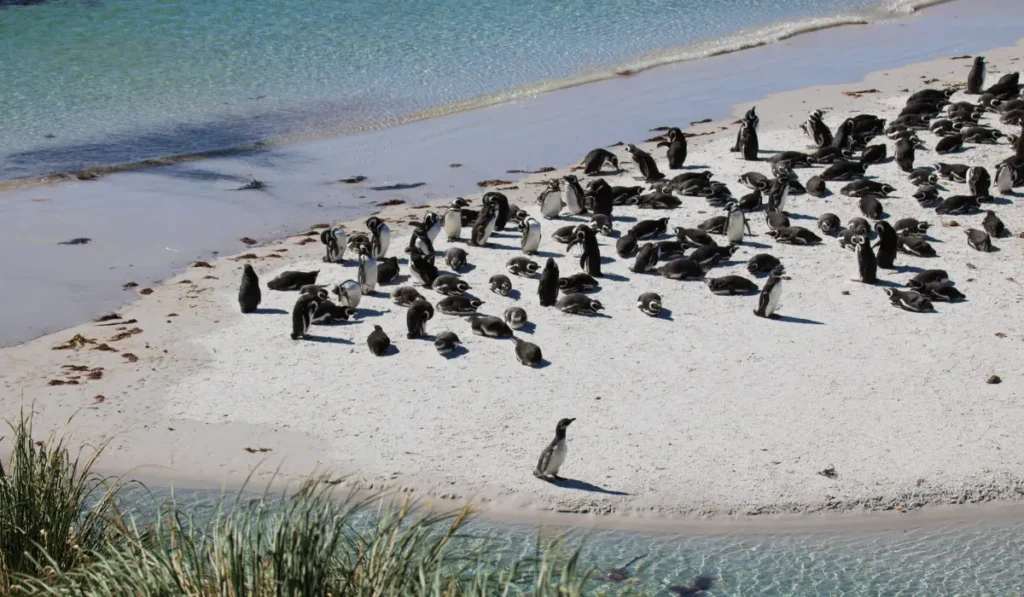
Besides penguins, Gypsy Cove hosts many other birds and some marine visitors. Black-crowned night herons nest on the low cliffs at Ordnance Point, and you may spot oystercatchers, two-banded plovers, steamer ducks, upland geese and kelp geese along the shore. Rock cormorants often fish offshore. Keep an eye out for skuas and terns flying by. Occasionally a sea lion or dolphin will appear in the bay. In summer the dry heath and tussac turn lush and even wildflowers bloom among the grasses, adding splashes of color to the landscape.
Insider Tip: Stay quietly on the viewing platform or along the beach and you might see penguins coming right up to the rocks. Always keep at least 5–6 metres (20 feet) away from any animal, and never feed or chase them.
Activities: Beach Walks and Birdwatching
All the attractions at Gypsy Cove Falkland Islands are nature-based. Stroll along the white sand beach and enjoy panoramic views of the sheltered bay. The calm waters here soften the strong winds of the Falklands, so it’s often pleasant even on windy days. The smooth golden sand forms a gentle crescent backed by grassy dunes. Wooden viewing platforms and benches allow plenty of spots for photography and relaxation.
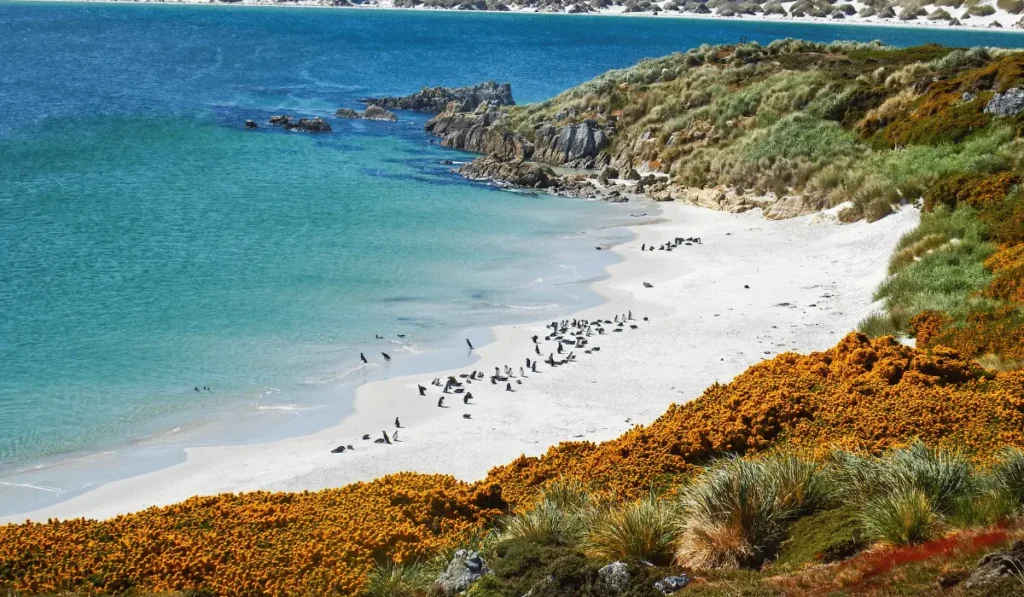
Birdwatchers will be in their element. Binoculars can help spot rock cormorants or night herons on the cliffs. Listen for the penguins’ laughing bray on the beach. Nearby Yorke Bay (just up the road) is famous for its huge wind-blown sand dunes – a great photo backdrop. If you have time, hike a little farther south along the coast to see the rusting Lady Elizabeth shipwreck near Surf Bay or enjoy broader views over Port William. On a clear day, some visitors even spot whales or dolphins offshore.
Most people simply relax on the beach and watch the wildlife. Remember to wear sturdy shoes and layers – the paths are uneven gravel and the weather changes quickly. Bring sun protection; the glare from the sand and water can be strong.
Ordnance Point: WWII History
A short trail leads east from Gypsy Cove around the headland to Ordnance Point, a rugged bluff with WWII gun emplacements. This vantage point offers sweeping views of The Narrows and Port William. Here you’ll find two large rusting coastal guns and concrete bunkers that once helped defend Stanley’s approaches. Interpretive signs explain the site’s wartime history.
The walk to Ordnance Point is mostly flat and easy (about a 10-minute stroll). Along the way, you’ll pass through tussac grass and might see more shorebirds or resting sea lions on the rocks. Ordnance Point is usually quieter than the main beach, making it a peaceful spot to enjoy the panorama.
Quick Fact: The cliffs at Ordnance Point are home to nesting rock cormorants and black-crowned night herons. At sunset, look for herons flying back to roost or hear their croaking calls.
Yorke Bay: Nearby Sand Dunes
Just north of Gypsy Cove is Yorke Bay, known for its massive golden sand dunes. From the parking area and trails you can see these dunes rising behind the beach. Unfortunately, Yorke Bay’s shore is fenced off (it was heavily mined in 1982), so you can’t walk on it. However, the dunes themselves make a stunning backdrop to Gypsy Cove’s view. The nearby Yorke Bay Pond attracts ducks, teal and other waterbirds, making the whole peninsula a birdwatcher’s paradise.
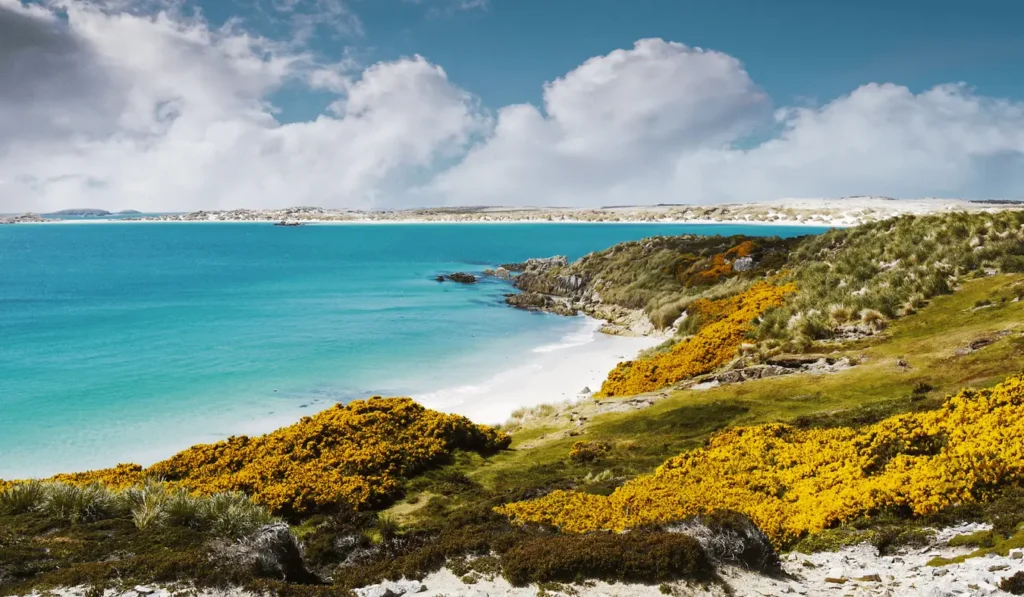
Tips for Visitors
- Best Time to Visit: Spring and summer (September–March) are ideal. This is when the penguins and other birds are active and the daylight hours are longest. Late November to early January is peak breeding season for penguins. However, even winter visits can be rewarding if you dress warmly.
- Clothing: The Falklands are windy and chilly year-round. Dress in warm, waterproof layers. A windproof jacket, hat and gloves can make a big difference. Wear sturdy walking shoes or boots for the gravel paths. On sunny days, don’t forget sunscreen and sunglasses to protect against UV and glare off the bay.
- Wildlife Safety: Always keep a safe distance (at least 5–6 metres) from all animals. Do not feed wildlife. Stay on marked trails to protect penguin burrows and fragile vegetation. If there are regulations or wardens, follow their instructions. Be quiet and patient – animals often come closer if you stand still.
- Facilities: There are only basic restrooms and picnic tables at the car park. No shops or cafes are on-site. Pack snacks and water before you come (Stanley is the nearest place to buy supplies). Bring any needed rubbish bags, since you should carry out all waste.
- Mobility: The path from the car park to the viewing platforms is a gentle gravel slope, but it may be rough for wheelchairs or prams. Once at the beach or platforms, the area is relatively flat. The Ordnance Point trail is dirt and rock. Assess your mobility needs before exploring beyond the main cove.
Conclusion
A visit to Gypsy Cove Falkland Islands is a must-see adventure. Its combination of stunning scenery – turquoise bay, white sand and rolling tussac – with friendly Magellanic penguins and intriguing WWII relics makes it truly unique. This easy day trip from Stanley offers something for everyone: photographers, birdwatchers, history buffs and families alike. Plan to spend at least an hour or two here so you can explore the beach and headland at a relaxed pace. You’ll leave with fond memories of this charming Falklands gem.
Frequently Asked Questions (FAQs)
Where is Gypsy Cove?
Gypsy Cove is on the Cape Pembroke peninsula of East Falkland, about 4 miles (6.5 km) northwest of Stanley, the islands’ capital.
How do I get there from Stanley?
By road, it’s a short drive or taxi ride. There’s no public bus, but tour coaches and cruise shuttles do visit Gypsy Cove. Hiking is possible via coastal paths (allow an hour or more).
What wildlife can I see at Gypsy Cove?
The main attraction is the Magellanic penguin colony (present Sept–Apr). You will also see birds like night herons, oystercatchers, plovers, geese and steamer ducks. Occasionally seals, sea lions or dolphins appear offshore. Nearby Yorke Bay adds even more birds like ducks and shorebirds.
Is there an entrance fee?
No. Gypsy Cove is free to enter and open year-round.
What facilities are available?
Basic public restrooms and picnic benches are at the car park. There are no shops or restaurants, so bring food and drinks.
Can I see penguins outside of summer?
No. The penguins migrate after breeding season. By April they leave the area until the next spring. You’ll still see other birds year-round, but the famous penguin colony only from September through April.

